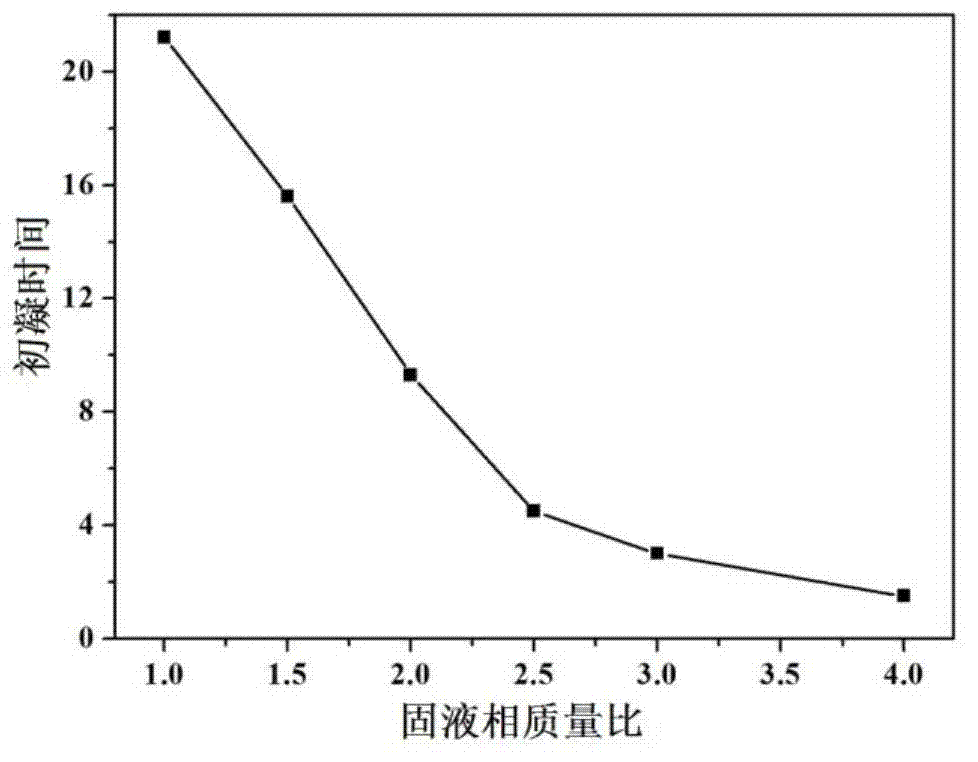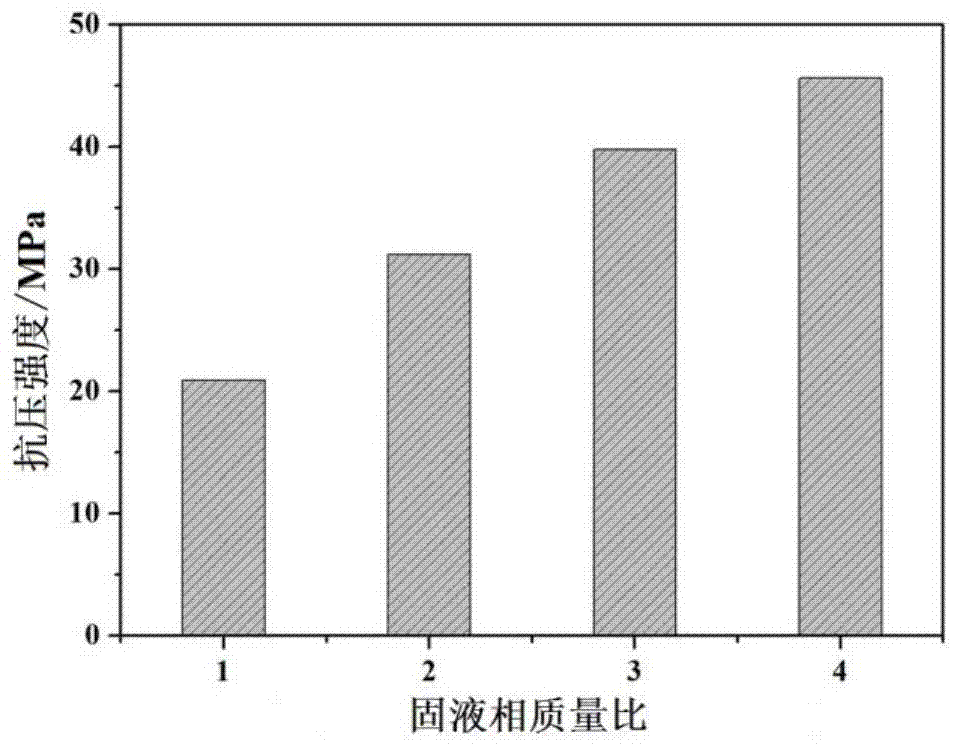Injectable and degradable bone cement, and preparation method and application thereof
A bone cement and borate technology, applied in medical science, prosthesis, etc., can solve the problems of surrounding tissue and spinal cord injury, lack of osteoinductive effect, low interface binding force, etc., and achieve excellent biological activity and biocompatibility , promote the proliferation and differentiation of osteoblasts, and promote the effect of new bone growth
- Summary
- Abstract
- Description
- Claims
- Application Information
AI Technical Summary
Problems solved by technology
Method used
Image
Examples
Embodiment 1
[0075] (1) Preparation of solid phase borate glass powder:
[0076] According to the composition of borate bioglass in Table 1, weigh the raw materials of each component, mix them evenly, put the original ingredients in a platinum crucible in a silicon-molybdenum furnace at 1100-1150°C, melt for 4 hours, and take out the obtained clarified glass The liquid is poured on the preheated steel plate to obtain a glass block. The obtained glass block is further crushed and classified by various crushing equipment, and the powder with a particle diameter of 30-40 μm is selected for use.
[0077] Table 1
[0078]
[0079] The last line of numbers in Table 1 is the mole percentage of each substance in the borate glass frit (the same as in the following table).
[0080] (2) Preparation of liquid-phase modified chitosan mixed sol:
[0081] Prepare the bone cement liquid phase with the following mass percentages of components: 2% acetic acid, 1% chitosan, 6% disodium β-glycerophospha...
Embodiment 2
[0085] (1) According to the borate bioglass composition in Table 2, weigh the raw materials of each component to prepare the original ingredients. After mixing evenly, put the original ingredients in a platinum crucible in a silicon-molybdenum furnace at 1100-1150 ° C for 4 hours. After taking it out, pour the resulting clarified glass liquid on the preheated steel plate to obtain a glass block. The obtained glass block is further crushed and classified by various crushing equipment, and the powder with a particle diameter of 30-40 μm is selected for use.
[0086] Table 2
[0087]
[0088]
[0089] (2) Prepare the bone cement liquid phase with the following mass percentages of components: 3% acetic acid, 2% chitosan, 7% disodium β-glycerophosphate, and 88% deionized water. Mix 3 g of glacial acetic acid with 88 g of deionized water to prepare an acetic acid solution. Finally, 2 g of chitosan (98% deacetylated) was weighed and dissolved in the prepared acetic acid solut...
Embodiment 3
[0094] (1) According to the composition of borate bioglass in Table 3, weigh the raw materials of each component to prepare the original ingredients. After mixing evenly, put the original ingredients in a platinum crucible in a silicon-molybdenum furnace at 1100-1150 ° C for 4 hours. After taking it out, pour the resulting clarified glass liquid on the preheated steel plate to obtain a glass block. The obtained glass block is further crushed and classified by various crushing equipment, and the powder with a particle diameter of 30-40 μm is selected for use.
[0095] table 3
[0096]
[0097] (2) Prepare the bone cement liquid phase with the following mass percentages of components: 4% acetic acid, 3% chitosan, 9% disodium β-glycerophosphate, and 84% deionized water. Mix 4 g of glacial acetic acid with 84 g of deionized water to prepare an acetic acid solution. Finally, 3g of chitosan (98% deacetylated) was weighed and dissolved in the prepared acetic acid solution, and m...
PUM
| Property | Measurement | Unit |
|---|---|---|
| Particle size | aaaaa | aaaaa |
Abstract
Description
Claims
Application Information
 Login to View More
Login to View More - R&D Engineer
- R&D Manager
- IP Professional
- Industry Leading Data Capabilities
- Powerful AI technology
- Patent DNA Extraction
Browse by: Latest US Patents, China's latest patents, Technical Efficacy Thesaurus, Application Domain, Technology Topic, Popular Technical Reports.
© 2024 PatSnap. All rights reserved.Legal|Privacy policy|Modern Slavery Act Transparency Statement|Sitemap|About US| Contact US: help@patsnap.com










